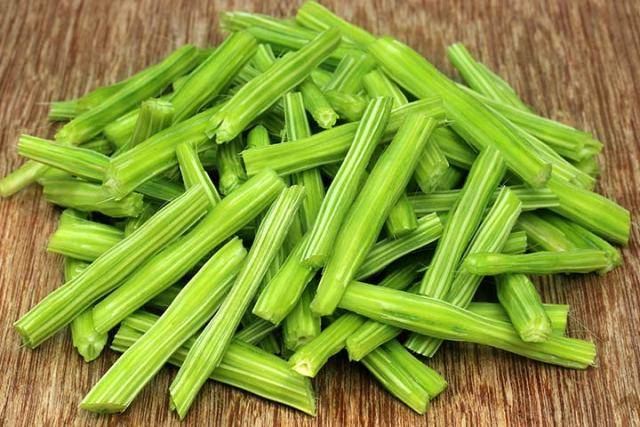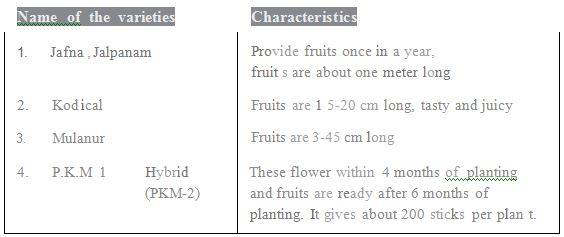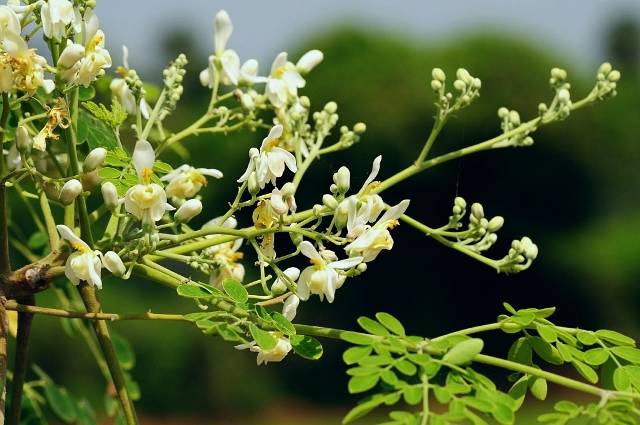
Drumstick cultivation is easy, less time consuming, and paying as well. Therefore, interested farmers may go in for such an endeavor. Drumstick cultivation is easy, less time consuming, and paying as well. Therefore, interested farmers may go in for such an endeavor. It is a fast-growing, drought-resistant tree, native to the southern foothills of the Himalayas in northwestern India, and widely cultivated in tropical and subtropical areas where its young seed pods and leaves are used as vegetables. It can also be used for water purification and hand washing and is sometimes used in herbal medicine.
The utility of Drumstick (DS)
Every part of the drumstick is useful. Tender leaves and sticks have a high amount of Protein, Carbohydrates, Vitamin A, Vitamin C and minerals. Each part is used as medicine. The data presented in Table 2 provided very useful information regarding drumstick. In addition to sticks and leaves, flowers of DS (drumstick) are valued ingredients of food that are not only tasty but nutritive too. Its juice is useful as protection from bacterial diseases.
Soil and Climate
It can be grown in a variety of soils, but loamy, sandy loam soils are better suited. Sadie soils and also dry conditions are quite ok.

Variety of Drumsticks
Generally, DS provides flowers once in a year, but a variety called Najee gives flowers throughout the year. The fruit of Najee is thick and short. "Tatanagar" is a high yielding Najee variety. its fruits are long and it flowers profusely and gi,·es high yields.
Name and qualities of some important varieties are mentioned below:

Raising Seedlings
Seedlings raising is easy. It can be propagated from seed and also from branches. About 15 cm x 7 cm polythene bag is most suited. May - June is the best time. During May - June, Soil and organic manure in 2:1 ratio have to be put in poly packets two seeds are to be put in each packet and kept under the shade and watered regularly. Germination takes place after 8-10 days. After 30-35 days seedlings are ready for planting in the mainland. About 800 gms seeds/ha is enough.
Vegetative Propagation
One to the two-meter long branch is cut from the mother plant and planted in soil with adequate moisture and the cut portion of the head is co,·ered with a lump of soil.
Land Preparation and Planting
Deep plowing is done for DS cultivation. Pits measuring 1ft x 1ft x 1ft at a distance of 2.5 m is prepared during summer months. Pits are filled with 2 kg of FYM and soil. On the onset of monsoon, the seedlings are planted in the pits. About 1500 plants are needed for a ha of land. Seedlings prepared by vegetative propagation also can be planted in the pits after filling with the manures. The banks of ponds and wastelands can be conveniently used for DS planting. (5)
Intercultural Operation
Timely and proper weeding at the initial stage of growth is needed. Seedlings raised from seeds need to be pruned when plants reach a height of about 3 ft. This helps in the branching of the plants and many fruits could be had from a lower height.
Fertilizer Application
After 3 months of planting, 50 g N, 20 g P20 5, and 25 g of K 20 are added per pits. In addition, about 5 kg FYM /vermicompost is to be added per plant.
Irrigation
During dry season irrigation helps for better growth of DS plants.

Plant Protection Measures
DS is highly susceptible to various insects. Caterpillar, hairy caterpillar, etc. are some of the common insects. Hairy caterpillars feed on leaves and buds and during day time stay at the base of the plants. This could be conveniently controlled by soap solution applications during day time when they gather together at the base of the plants.
Harvesting
After 6 months of 'planting, harvesting it can be done. On average 200 fruits could be obtained. After harvesting, the pruning of plants is done to get more branches and fruits in the next season.
From the vegetative propagation tall plants are obtained. Therefore, after harvesting, branches have to be axed. Initially, about 90 fruits per plant are obtained but with the passage of times about 800 - 1000 DS are obtained / plant.















